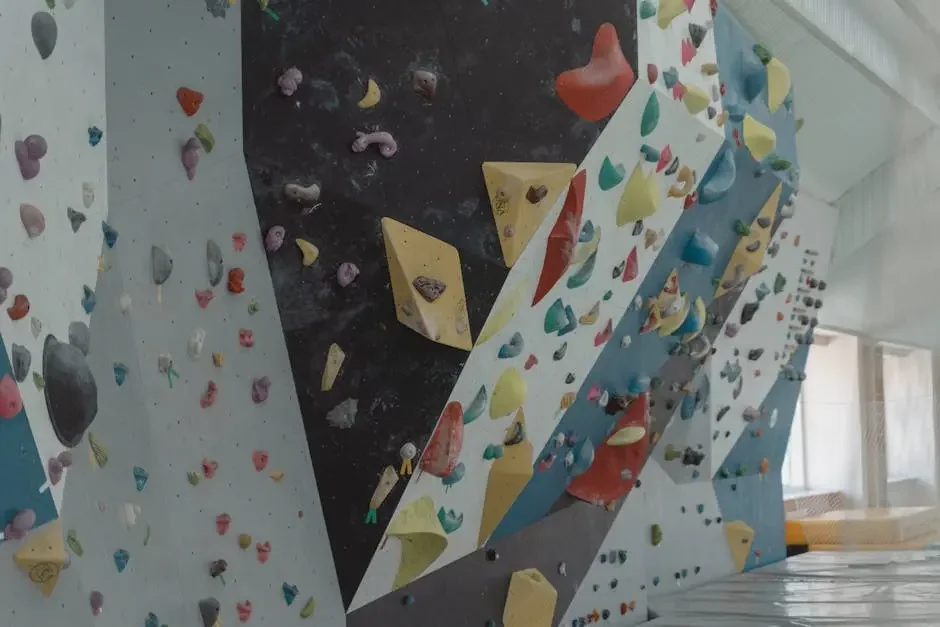12 Ways Climbing Fitness Takes Low-Impact Training to the Next Level
Are you looking to enhance your fitness routine without putting too much strain on your body? Climbing fitness provides innovative ways to boost your low-impact training, allowing you to build strength and endurance while minimizing the risk of injury. Here are twelve compelling benefits and techniques that highlight how climbing can elevate your fitness journey.
1. Improved Core Strength Through Climbing
Climbing engages your core muscles extensively, making it a perfect low-impact workout for core strength development. As you navigate routes, you'll find your obliques, abdominals, and back working in harmony. This multi-muscle engagement not only improves stability but also helps in posture. Over time, as you scale varying terrains, you’ll notice how your core becomes more resilient and versatile.
But it’s not just about the strength you gain; climbing enhances your overall motor function too. When you climb, every move requires balance and control—skills that effectively translate to everyday physical activities. So, whether you’re reaching for that top shelf or participating in recreational sports like soccer or basketball, your performance will improve remarkably.
2. Enhanced Flexibility Without Strain
The various movements required in climbing naturally promote flexibility, helping you stretch your muscles in a safe, low-impact environment. As you stretch to reach those high holds or maneuver your body around challenging corners, you'll find your hamstrings, hips, and shoulders progressively becoming more limber.
Furthermore, this dynamic stretching is less likely to lead to injury compared to static stretching performed before traditional workouts. The range of motion you develop during climbing prepares your body for real-life movements, reducing the risk of strains and enhancing your athletic performance overall.
3. Weight-Bearing Benefits for Bone Health
Climbing serves as a weight-bearing activity that helps improve bone density, crucial for maintaining strong bones, especially as we age. The act of lifting your body weight and the resistance against gravity during climbs stimulates the bones, encouraging their growth and strengthening them.
Moreover, this bone health boost comes with an added bonus: climbing is intrinsically enjoyable. Unlike traditional weightlifting routines that might feel tedious to some, the engaging nature of climbing keeps your motivation high, helping you stick with your exercise regimen. Consistent climbing fosters a sense of accomplishment and progress, giving you even more reason to continue.
4. Low-Impact Cardio for Endurance
Unlike traditional cardio exercises that may strain your joints, climbing offers an enjoyable way to elevate your heart rate and boost your cardiovascular health without the impact. The rhythmic nature of climbing—in combination with climbing’s varying intensity—builds endurance effectively.
As you tackle different routes, you'll be surprised to see how your stamina increases over time. Each ascent challenges your heart and lungs, making them work harder without the harsh pounding often associated with running or aerobics. This sustained action results in better circulation and a lower resting heart rate, both indicators of better cardiovascular fitness.
5. Focused Breathing Techniques
Climbers must practice controlled breathing to maintain endurance, leading to better oxygen flow and improved overall performance. The rhythm of your breath becomes a crucial part of your climbing technique, providing the energy needed to pull through challenging sections while still staying calm.
This emphasis on breath control can translate into daily life benefits as well. Whether you're managing stress at work or simply trying to relax at home, the breathing patterns developed during climbing can enhance your overall sense of well-being. You'll find yourself breathing more deeply and evenly when faced with stressors, promoting a clearer mind.
6. Developing Grip Strength with Less Strain
Climbing strengthens grip without the repetitive motions that can be harmful. A strong grip is essential in many areas of fitness and life in general. As you grip various holds, from tiny edges to wide jugs, you engage a variety of muscles in your hands and forearms, helping develop strength you might not achieve with traditional weights.
What’s fascinating is how this grip strength is functional. It supports not just your climbing, but daily activities like opening jars, carrying groceries, or even doing complex exercises like deadlifts. The versatility of climbing thus ensures that your fitness journey pays off in multiple facets.
7. Engaging Upper Body Muscles Safely
Climbing effectively targets upper body muscles, allowing for a more diverse workout without the negative impact typical of other resistance training options. As you pull yourself up, you're recruiting your lats, biceps, triceps, and shoulders, each movement encouraging greater muscle engagement.
The beauty of climbing lies in its ability to combine various movements that naturally protect your joints. Unlike some weightlifting routines that can lead to stress in the shoulder, climbing allows you to build upper body strength in a more organic way, helping you avoid injuries commonly associated with traditional gym workouts.
8. Mental Clarity Through Problem Solving
The problem-solving aspects of climbing encourage mental focus and clarity, promoting a healthier mind while you workout your body. Each route presents its unique challenges; figuring out how to ascend requires creativity and strategic thinking.
This mental engagement provides a dual fitness experience. While your body is getting stronger, your mind sharpens too. This unique combination can lead to improved cognitive function in daily tasks, enhancing creativity and decision-making abilities. The thrill lies not only in physical achievement but in mental growth as well.
9. Social Connections in a Climbing Community
Climbing often involves working with others, which fosters social connections and support systems, enhancing your overall fitness journey. Whether you’re at the local gym or outdoors scaling a cliff, climbers tend to be a friendly and welcoming community.
Building friendships through climbing can be a significant motivator to stay active. You'll find partners who encourage you during challenging climbs and celebrate your victories, creating a supportive atmosphere that keeps you coming back for more.
10. Body Awareness and Coordination Boost
As you climb, you develop a better sense of body awareness and coordination, skills that are beneficial across various fitness disciplines. The ability to shift your weight effectively and align your body in the right positions directly translates to improvements in other activities, including dance, yoga, and even martial arts.
This enhanced coordination helps reduce the risk of injury in all forms of physical activity. The more you understand how to control your body, the more capable you become in navigating various challenges, both in and out of the climbing gym.
11. Adaptable for All Fitness Levels
Climbing can be tailored to fit any fitness level, making it a versatile low-impact option, from beginners to experienced climbers. It's unique in that it allows newcomers to find routes that match their abilities while still providing challenging experiences as skill levels progress.
Whether you're just starting or looking to push your limits, the climbing community and gyms often have programs in place to accommodate various levels. The accessibility truly makes it an inviting sport for everyone, and the joyous bond formed with fellow climbers is a perk that enriches the journey, no matter where you start.
12. Unique Stress Relief Experience
The combination of physical activity and the focus required can significantly reduce stress levels, making climbing a rewarding low-impact release. Each ascent becomes an opportunity to connect with your surroundings, letting go of daily worries as you immerse yourself in the challenge at hand.
This meditative aspect of climbing can be a game-changer for mental health. As you climb, you enter a state of flow that promotes feelings of happiness and fulfillment, leaving behind the stressors of everyday life while providing an impactful workout simultaneously.

